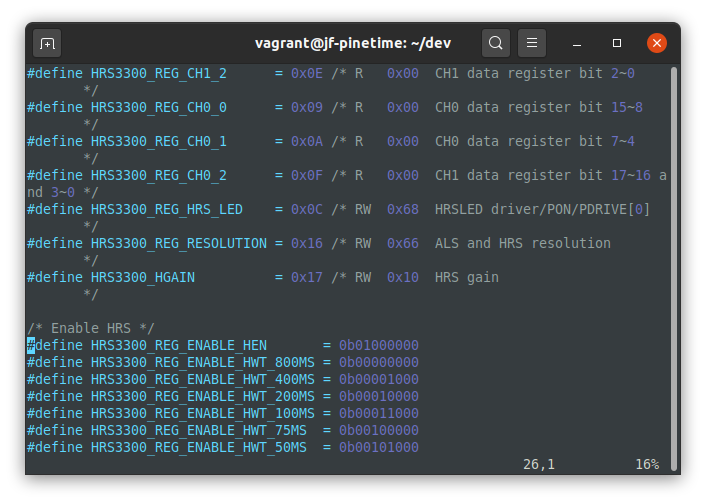 Coffee Space
Coffee Space 

With my first PineTime I was very enthusiastic about programming it. My original intention was even to build my own OS for it, but actually I realised I don’t really have enough experience with working on such controllers to do so.
I originally played with the idea of running a micro virtual machine on the device to allow for multiple apps to run relatively sandboxed on the device. I even looked to utilise a Java VM designed to run on microcontrollers (designed for a Lego robot I believe). Unfortunately it was never meant to be.
I got my first PineTime a while back and was working on a method to flash it using an Orange Pi, but in my foolish attempt to solder such a small pitch board ended up back-firing and I broke the watch. I made a few attempts, but there is no recovery of this device - something is fundamentally broken now.
I still needed a decent smart watch to monitor my health, and after having purchased an off-the-shelf solution from China with a fake sensor, I decided enough is enough and I really want to pursue this project again. I ordered another device, but this time it came with the firmware written by JF002, which came with the awesome ability to support OTA (over the air) updates via BLE.
I got the device with version 0.7.0 (I believe) and was easily able to flash it to 0.9.0 using the latest relase from GitHub, using the OTA DFU process. I was very happy about how well this process worked and decided to (controversially) super glue the device together.
As long as I don’t flash crazy bad firmware, in theory this should continue to work… We shall see though!

The next step was to build a development environment that I was happy with that can build various images. After a couple of hours of reading and hacking, I finally built a development environment based on Vagrant. There is a docker version, but honestly I would rather have a completely enclosed virtual machine rather than container given we’re running random binaries.
I’m currently working towards getting the heart rate sensor up and running, a basic feature I want in order to be able to use this as a daily driver. Without it, it’s just an overly complicated time interface (and honestly, not a great one).
After having spent a few hours in the code base, I have a few thoughts (which may be subject to change at a later date):
Regarding the hardware, I have a few thoughts:
Anyway, this is enough ranting for now - hopefully I will be in a position to improve the situation!